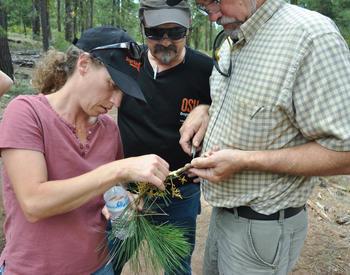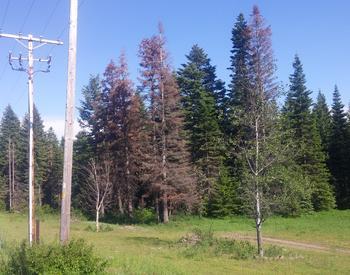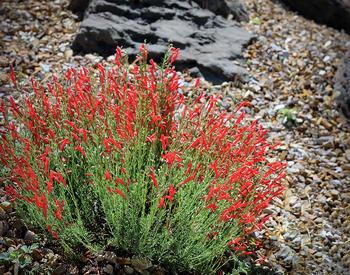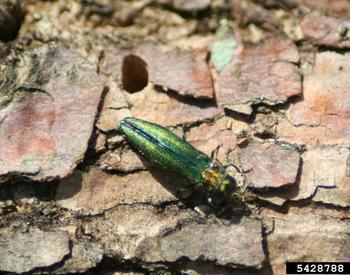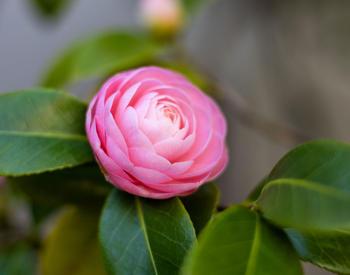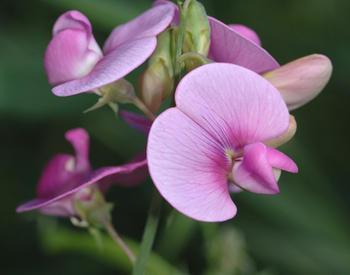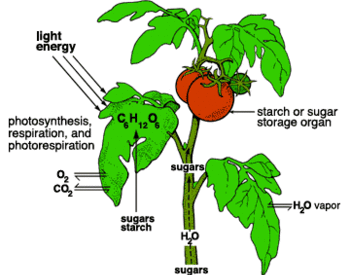A tree with a diameter of 38 feet? The Tule Tree is the largest tree by girth in the Americas, and perhaps the world, greater in diameter than even the largest giant sequoia. A recent trip to Oaxaca, Mexico, brought me to this remarkable specimen outside a church in the village of Santa Maria. I also saw a number of other plants, both strange and familiar.
With a circumference variously listed as 119 feet to 160 feet, the Tule Tree is a whopper by any measure. The diameter is about 38 feet, and about 31 feet when you consider the cross-sectional area. That compares to 29.5 feet diameter for the largest known giant sequoia. Visiting the tree hardly qualifies as a wilderness experience – it lies adjacent to a church courtyard and the Santa Maria plaza, which is filled with food vendors and local residents hawking souvenirs. But it is certainly thrilling for any tree lover. Aside from the massive girth, the sweeping branches create a fantastically complex crown that is a world unto itself. From a distance, the canopy dwarfs the Santa Maria church.
In the ancient Nahuatl language the tree is called Ahuehuete – deep water. In the winter dry season, the local landscape is brown and dusty, but once upon a time the tree grew in or adjacent to a wetland. This Montezuma cypress (Taxodium mucronatum) is closely related to the southern bald cypress of the southern U.S. – a tree that thrives in swamps. And it belongs to the same family as giant sequoias and redwoods. Together, these are the largest trees on earth.
Because of its fluted and many-branched character, it was thought that the Tule Tree actually might be several trees that have fused together. However, DNA analysis shows that it is one individual.
Today, there are other Montezuma cypress found in the area, mostly in riparian zones, but I didn’t see any. Urban and agricultural use has drained wetlands and dropped the water table, and the Tule Tree is under stress.
Tule Tree - the numbers
- Location: Santa Maria del Tule, about 15 km southwest of Oaxaca City, Oaxaca, Mexico
- Circumference: 119 feet
- Diameter: 38 feet
- Number of tree huggers it takes to encircle tree: 17
- Volume: 24,675 ft3
- Leaf surface area: 99,500ft2 (~2 acres)
- Age: Estimated ~1,500 years
Oaxaca lies in a valley surrounded by the Sierra Madre mountains, which tower more than a vertical mile above the surrounding subtropical lowlands. Starting at the valley bottom, you go from cacti and bougainvillea upward through a pine-oak forest to the highest elevations featuring pine, true fir and rhododendron.
The summit was wrapped in cloud when I was there, a distinctly chilly experience. I ran into several large madrone and it all started to feel familiar, but the bromeliads growing on pine snags and agave plants reminded me I was still several thousand miles from Medford.
My guide was a local teenage boy with a large eyebrow piercing. As an employee of a network of mountain villages that earned money from tourists like me, he was quite knowledgeable about the birds and plants and had the patter down. I was more than happy to pay. The income they derive from ecotourism gives them an alternative to cutting down the trees and replacing them with corn fields. Other villages in the area manage their forests in part for timber production, and have sawmills and a furniture factory. In the Sierra it’s easy to see how protection of biodiversity and local economic benefit are not competing values, but are closely linked.
